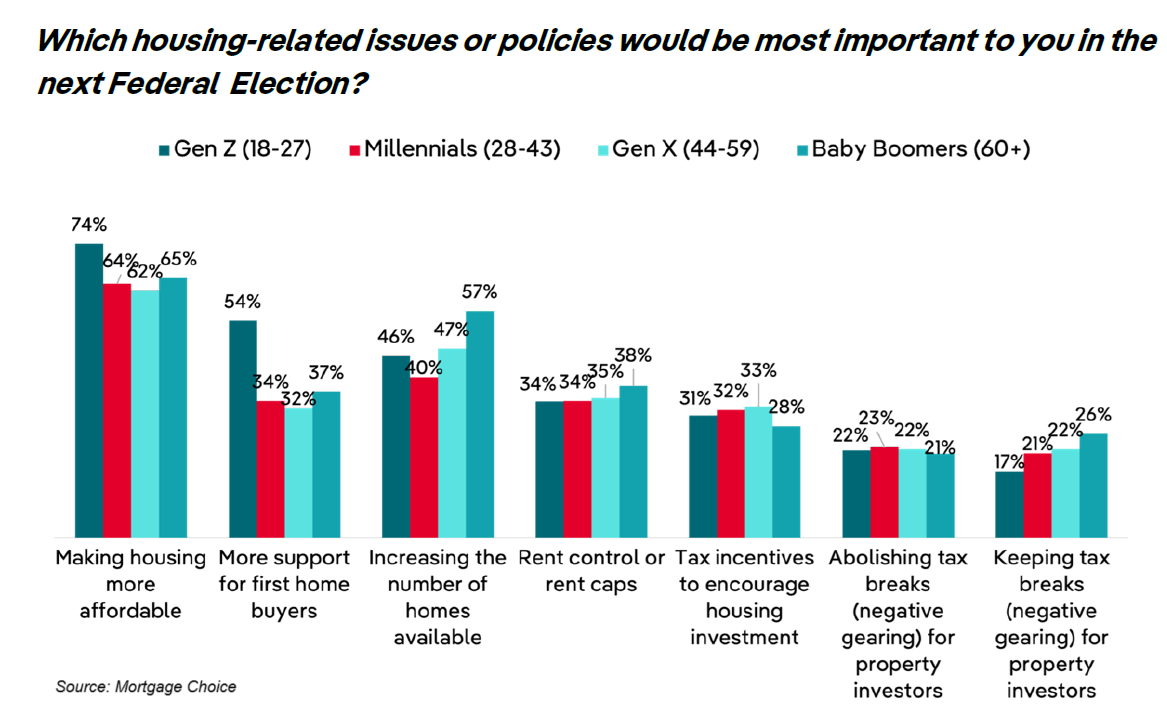New research highlights key concerns that will likely sway voters in the upcoming election

Housing issues will play a critical role in the upcoming Australian federal election, with 87% of Australians indicating that housing policies will influence their vote, a new Mortgage Choice report has revealed.
With an election anticipated within six months, the quarterly Mortgage Choice Home Loan Report indicates strong support for government intervention in the housing market.
Key priorities for voters include housing affordability (65%), increased housing supply (47%), support for first-home buyers (37%), rent control (35%), and tax incentives for investors (31%).
“The Mortgage Choice Home Loan Report reveals that those with a mortgage are supportive of increased government intervention to improve housing affordability (71%), but opinion is divided on the measures used to achieve this,” said Anthony Waldron (pictured), chief executive of Mortgage Choice.
“While almost half (47%) of survey respondents with a mortgage said that reforming tax policies would make housing more affordable, 46% of mortgage holders surveyed currently negatively gear an investment property and would not like to lose those tax concessions.”

The survey also indicated a notable shift in buyer sentiment, with 46% of prospective buyers feeling hopeful about the property market, up from 43% in the previous quarter. The proportion of buyers who feel anxious has also dropped from 39% to 33%. This optimism appears linked to expectations that interest rates will soon fall, which could boost borrowing power and reduce monthly repayments.
Respondents in Sydney remain particularly sensitive to interest rates, with 65% reporting that current rates impact their confidence, compared to 50% in other cities.
The report also explored what measures Australians believe would make homeownership more achievable for future generations. Nearly 60% of survey respondents pointed to lowering interest rates as a key solution, with 49% supporting stamp duty reform and 37% suggesting a reduction in the interest rate buffer on mortgages.
“It’s no surprise that consumers feel a reduction in home loan interest rates would make homeownership more achievable – a rate reduction would certainly improve borrowing power and reduce home loan repayments,” Waldron said.
“It’s interesting to see consumers’ awareness about the potential power of stamp duty reform, as I believe this tax presents one of the biggest barriers to first-time buyers. Shifting to an annual land tax levied on all properties would improve housing supply and, in turn, benefit housing affordability.”
Looking ahead, 20% of prospective buyers indicated they hope to purchase this summer, while 23% are eyeing autumn 2025. Many respondents, especially in Sydney and Melbourne, are waiting for a rate cut or price drop before committing.
The report showed that the national average loan size has risen by 10% over the past year. In the September quarter, the value of loans for investment purposes increased by nearly 29%, with Queensland and Western Australia seeing the strongest growth.
“When you consider that average loan sizes have grown for the last three quarters, it’s no surprise that prospective buyers are waiting for home loan interest rates to fall to put their purchase plans into action,” Waldron said.
“While most economists predict that a rate cut is coming, the timing of that cut remains uncertain – especially given the latest data from the Australian Bureau of Statistics shows that underlying inflation remains high and employment growth is strong.
“My advice to hopeful buyers would be to buy when you’re ready and avoid trying to time the market.”
Loan demand for property purchases rose 21.6% year-on-year, while loans for construction increased by 12.6%. However, refinancing demand continued to decline, falling 0.4% year-on-year in the September quarter. This follows a 20.8% drop in refinancing values in the previous quarter, though the rate of decline has slowed.
Want to be regularly updated with mortgage news and features? Get exclusive interviews, breaking news, and industry events in your inbox – subscribe to our FREE daily newsletter. You can also follow us on Facebook, X (formerly Twitter), and LinkedIn.



